-
 Bitcoin
Bitcoin $79,751.2585
-4.17% -
 Ethereum
Ethereum $1,528.5818
-8.78% -
 Tether USDt
Tether USDt $0.9994
-0.04% -
 XRP
XRP $1.9747
-4.76% -
 BNB
BNB $576.4788
-1.22% -
 USDC
USDC $0.9997
-0.03% -
 Solana
Solana $113.0849
-5.62% -
 Dogecoin
Dogecoin $0.1540
-5.27% -
 TRON
TRON $0.2365
-0.39% -
 Cardano
Cardano $0.6064
-5.34% -
 UNUS SED LEO
UNUS SED LEO $9.4091
0.49% -
 Chainlink
Chainlink $12.0846
-5.35% -
 Avalanche
Avalanche $18.2960
-1.72% -
 Toncoin
Toncoin $2.9528
-7.42% -
 Hedera
Hedera $0.1689
-1.30% -
 Stellar
Stellar $0.2306
-5.26% -
 Shiba Inu
Shiba Inu $0.0...01166
-3.63% -
 Sui
Sui $2.0992
-6.89% -
 MANTRA
MANTRA $6.4075
-4.41% -
 Bitcoin Cash
Bitcoin Cash $291.4815
-5.28% -
 Litecoin
Litecoin $73.5505
-4.41% -
 Polkadot
Polkadot $3.4875
-5.77% -
 Dai
Dai $0.9999
-0.03% -
 Bitget Token
Bitget Token $4.2077
-1.17% -
 Ethena USDe
Ethena USDe $0.9987
-0.05% -
 Hyperliquid
Hyperliquid $14.2317
1.76% -
 Pi
Pi $0.5894
-3.24% -
 Monero
Monero $200.6204
-2.27% -
 OKB
OKB $52.8116
-1.74% -
 Uniswap
Uniswap $5.0373
-7.90%
How to monetize NFT music and video content?
NFTs revolutionize how artists monetize music and video, using blockchain for unique, verifiable tokens and offering new revenue streams through royalties and exclusive access.
Apr 05, 2025 at 10:56 pm
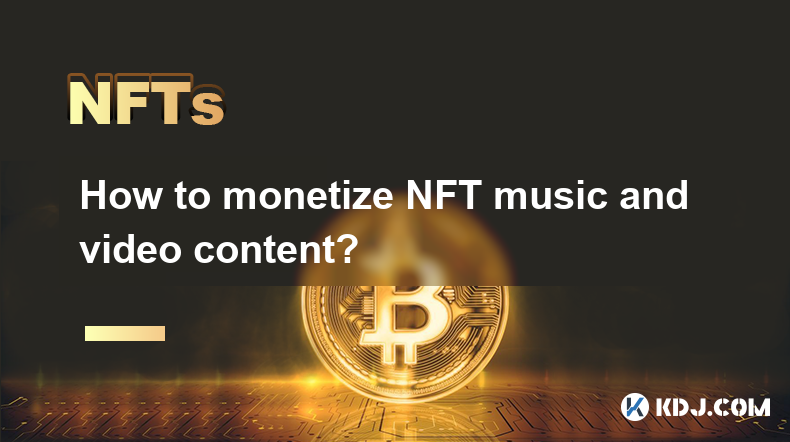
Non-Fungible Tokens (NFTs) have revolutionized the way artists and content creators can monetize their work, especially in the realms of music and video. By leveraging blockchain technology, creators can now sell their digital assets as unique, verifiable tokens. This article will explore various strategies for monetizing NFT music and video content, answering potential questions about the process, and providing a comprehensive guide to help artists maximize their earnings.
Understanding NFTs and Their Value in Music and Video
NFTs are unique digital assets that are stored on a blockchain, ensuring their authenticity and ownership. In the context of music and video, NFTs can represent a wide range of content, from individual songs and albums to music videos and short films. The value of these NFTs stems from their uniqueness and the ability to prove ownership, which can be appealing to collectors and fans alike. By selling their work as NFTs, artists can tap into new revenue streams and engage with their audience in innovative ways.
Creating and Minting NFT Music and Video Content
The first step in monetizing NFT music and video content is to create and mint the NFTs. Here are the key steps involved:
- Choose a Blockchain Platform: Popular platforms for minting NFTs include Ethereum, Solana, and Polygon. Each platform has its own set of fees and technical requirements, so it's important to choose one that aligns with your needs.
- Select an NFT Marketplace: Marketplaces like OpenSea, Rarible, and Foundation allow you to list and sell your NFTs. Research the fees and features of each platform to find the best fit for your content.
- Prepare Your Content: Ensure that your music or video files are in the appropriate format and quality. You may also want to create additional assets, such as artwork or metadata, to enhance the value of your NFTs.
- Mint Your NFTs: Use the chosen platform's tools to mint your NFTs. This process typically involves uploading your content, setting a price, and specifying any royalties you wish to receive from future sales.
Setting Up Royalties for Ongoing Revenue
One of the most attractive aspects of NFTs is the ability to set up royalties, which allow creators to earn a percentage of the sale price whenever their NFT is resold. This can provide a steady stream of income over time. To set up royalties, follow these steps:
- Determine the Royalty Percentage: Decide on the percentage of each resale that you want to receive. Common percentages range from 5% to 10%, but you can choose any amount that suits your needs.
- Configure Royalties on the Marketplace: Most NFT marketplaces allow you to set up royalties during the minting process. Make sure to check the platform's documentation to understand how to implement this feature correctly.
- Track and Receive Royalties: Once your NFTs are sold and resold, you will receive your royalty payments automatically. Keep track of these transactions to ensure you are receiving the correct amounts.
Marketing and Promoting Your NFT Music and Video Content
Effective marketing is crucial for successfully monetizing NFT music and video content. Here are some strategies to consider:
- Leverage Social Media: Use platforms like Twitter, Instagram, and TikTok to promote your NFTs. Share previews of your content, behind-the-scenes footage, and updates on your NFT projects to build excitement and attract buyers.
- Collaborate with Other Artists: Partner with other musicians, filmmakers, or influencers to create joint NFT projects. This can help you reach new audiences and increase the perceived value of your NFTs.
- Engage with NFT Communities: Join online forums, Discord servers, and other communities dedicated to NFTs. Participate in discussions, share your work, and network with potential buyers and collaborators.
- Create Limited Editions and Special Releases: Offer limited edition NFTs or special releases to create a sense of urgency and exclusivity. This can drive demand and increase the value of your NFTs.
Exploring Additional Monetization Opportunities
In addition to selling NFTs and earning royalties, there are several other ways to monetize your music and video content through NFTs. Consider the following strategies:
- Offer Exclusive Access: Use NFTs to grant buyers exclusive access to content, such as unreleased tracks, behind-the-scenes footage, or virtual concerts. This can create additional value for your NFTs and attract more buyers.
- Bundle NFTs with Physical Items: Combine your NFTs with physical merchandise, such as vinyl records, signed posters, or limited-edition merchandise. This can appeal to collectors and fans who value tangible items.
- Create NFT-Backed Experiences: Develop unique experiences, such as virtual meet-and-greets, Q&A sessions, or interactive workshops, that are accessible only to NFT holders. This can enhance the value of your NFTs and foster a deeper connection with your audience.
Navigating Legal and Copyright Considerations
When monetizing NFT music and video content, it's important to consider legal and copyright issues. Here are some key points to keep in mind:
- Ensure Ownership and Rights: Before minting your NFTs, make sure you have the necessary rights to the content. This includes any music, video, or artwork that you plan to include in your NFTs.
- Understand Platform Terms and Conditions: Each NFT marketplace has its own terms and conditions regarding copyright and ownership. Review these carefully to ensure compliance and protect your rights.
- Consider Licensing Agreements: If you are collaborating with other artists or using third-party content, consider entering into licensing agreements to clarify ownership and usage rights.
- Protect Your Intellectual Property: Register your NFTs and associated content with relevant copyright offices to protect your intellectual property and prevent unauthorized use.
Analyzing Market Trends and Adjusting Strategies
The NFT market is constantly evolving, and staying informed about market trends can help you adjust your monetization strategies accordingly. Here are some tips for staying ahead of the curve:
- Monitor NFT Sales Data: Use platforms like NFTGo or CryptoSlam to track sales data and identify trends in the NFT market. This can help you understand what types of content are in demand and adjust your offerings accordingly.
- Stay Updated on Industry News: Follow industry news sources, such as Decrypt, CoinDesk, and NFT Now, to stay informed about the latest developments in the NFT space. This can help you anticipate market shifts and adapt your strategies.
- Experiment with Different Approaches: Don't be afraid to try new approaches to monetizing your NFT music and video content. Experiment with different pricing models, marketing strategies, and content types to see what works best for your audience.
- Engage with Your Community: Regularly interact with your NFT community to gather feedback and insights. This can help you understand what your audience values and tailor your offerings to meet their needs.
Common Questions Related to Monetizing NFT Music and Video Content
Q: What are the benefits of selling music and video content as NFTs?
A: Selling music and video content as NFTs offers several benefits, including the ability to prove ownership and authenticity, set up royalties for ongoing revenue, and engage with fans in new and innovative ways. NFTs also allow creators to tap into new markets and reach collectors who value unique digital assets.
Q: How do I choose the right blockchain platform for my NFTs?
A: When choosing a blockchain platform for your NFTs, consider factors such as transaction fees, scalability, and the platform's reputation within the NFT community. Popular platforms like Ethereum, Solana, and Polygon each have their own strengths and weaknesses, so it's important to research and choose the one that best fits your needs.
Q: Can I set up royalties on all NFT marketplaces?
A: Most major NFT marketplaces, such as OpenSea, Rarible, and Foundation, allow creators to set up royalties. However, the specific process and available options may vary between platforms. Be sure to review the documentation for each marketplace to understand how to implement royalties correctly.
Q: How can I effectively market my NFT music and video content?
A: Effective marketing strategies for NFT music and video content include leveraging social media, collaborating with other artists, engaging with NFT communities, and creating limited editions or special releases. It's also important to stay informed about market trends and adjust your strategies accordingly.
Q: What legal considerations should I be aware of when selling NFTs?
A: When selling NFTs, it's important to ensure you have the necessary rights to the content, understand the terms and conditions of the NFT marketplace, consider licensing agreements if collaborating with others, and protect your intellectual property by registering your NFTs and associated content with relevant copyright offices.
Q: How can I stay informed about NFT market trends?
A: To stay informed about NFT market trends, monitor sales data on platforms like NFTGo or CryptoSlam, follow industry news sources such as Decrypt, CoinDesk, and NFT Now, and engage with your NFT community to gather feedback and insights. Experimenting with different approaches can also help you stay ahead of the curve.
Disclaimer:info@kdj.com
The information provided is not trading advice. kdj.com does not assume any responsibility for any investments made based on the information provided in this article. Cryptocurrencies are highly volatile and it is highly recommended that you invest with caution after thorough research!
If you believe that the content used on this website infringes your copyright, please contact us immediately (info@kdj.com) and we will delete it promptly.
- Bitcoin and other cryptocurrencies have been extremely volatile
- 2025-04-11 06:55:12
- As Bitcoin Consolidates, These 5 Altcoins Are Poised to Explode in the Next Bull Market
- 2025-04-11 06:55:12
- Amid Ongoing Volatility, LINK Is Poised to Decline
- 2025-04-11 06:50:12
- SHIB whales shift focus as Lightchain AI's $18.9m presale and bold forecasts spark buzz
- 2025-04-11 06:50:12
- Gold Prices Reach New Record High Amid Escalating U.S.-China Trade Tensions
- 2025-04-11 06:45:12
- title: Binance Adds Support for New Bitcoin (BTC) Staking Protocol Babylon (BABY)
- 2025-04-11 06:45:12
Related knowledge
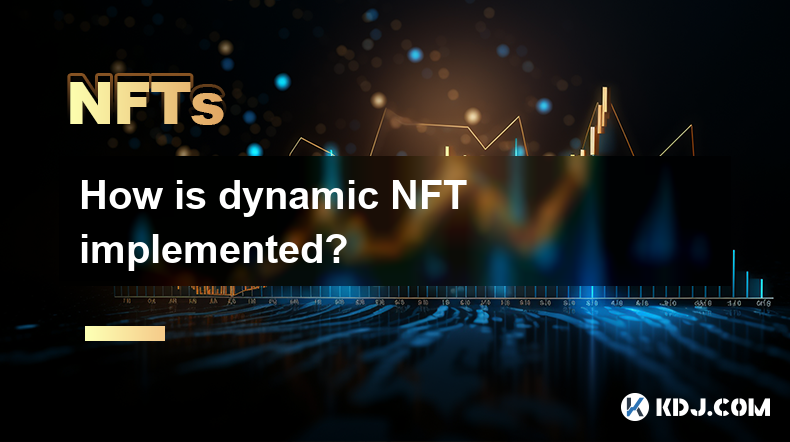
How is dynamic NFT implemented?
Apr 11,2025 at 04:56am
Dynamic NFTs, or dNFTs, represent a fascinating evolution in the world of non-fungible tokens. Unlike static NFTs, which remain unchanged once minted, dynamic NFTs can evolve, change, or update based on certain conditions or external data. This article will delve into the implementation of dynamic NFTs, exploring the technologies and processes involved ...
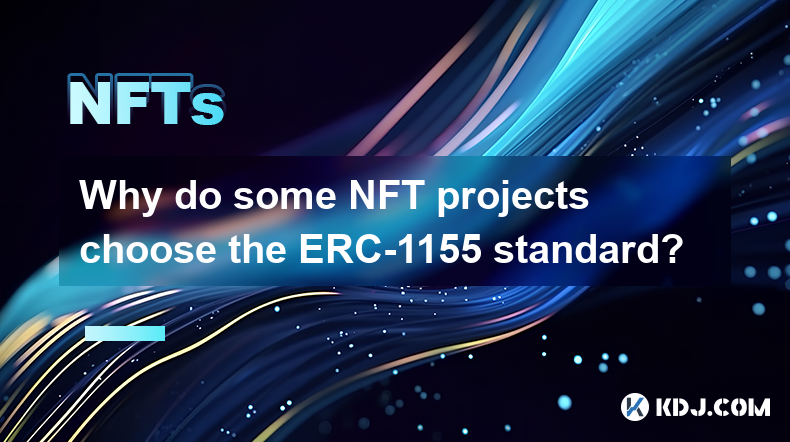
Why do some NFT projects choose the ERC-1155 standard?
Apr 08,2025 at 11:49am
The world of Non-Fungible Tokens (NFTs) has seen a significant rise in popularity and innovation, leading to the development of various token standards. Among these, the ERC-1155 standard has emerged as a versatile and efficient choice for many NFT projects. This article delves into the reasons why some NFT projects opt for the ERC-1155 standard, explor...
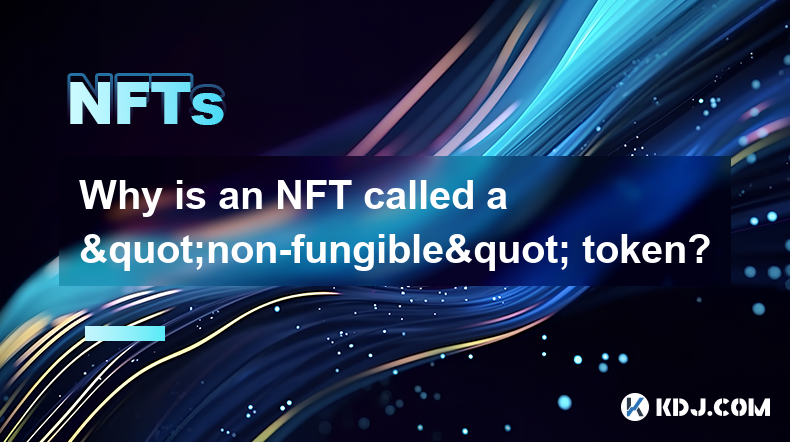
Why is an NFT called a "non-fungible" token?
Apr 11,2025 at 06:15am
An NFT, or Non-Fungible Token, is a unique digital asset that represents ownership or proof of authenticity of a specific item or piece of content, typically stored on a blockchain. The term 'non-fungible' is crucial to understanding the nature and value of these tokens. In this article, we will delve into the reasons why an NFT is called a 'non-fungibl...
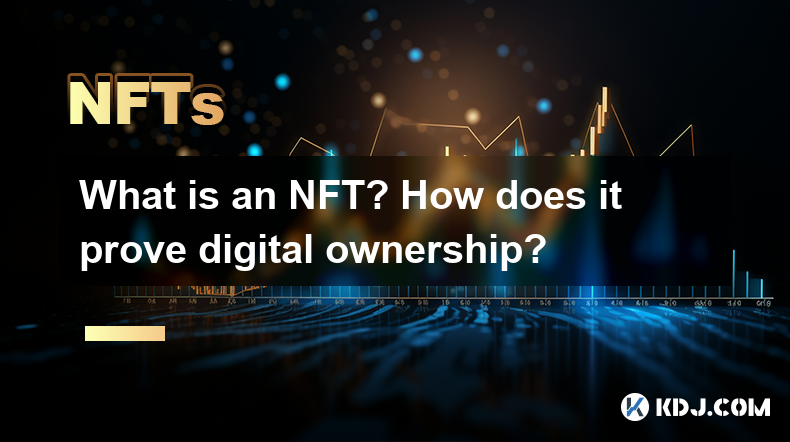
What is an NFT? How does it prove digital ownership?
Apr 09,2025 at 11:21pm
An NFT, or Non-Fungible Token, is a unique digital asset that represents ownership or proof of authenticity of a specific item or piece of content, typically stored on a blockchain. Unlike cryptocurrencies such as Bitcoin or Ethereum, which are fungible and can be exchanged on a one-to-one basis, NFTs are distinct and cannot be exchanged on a like-for-l...
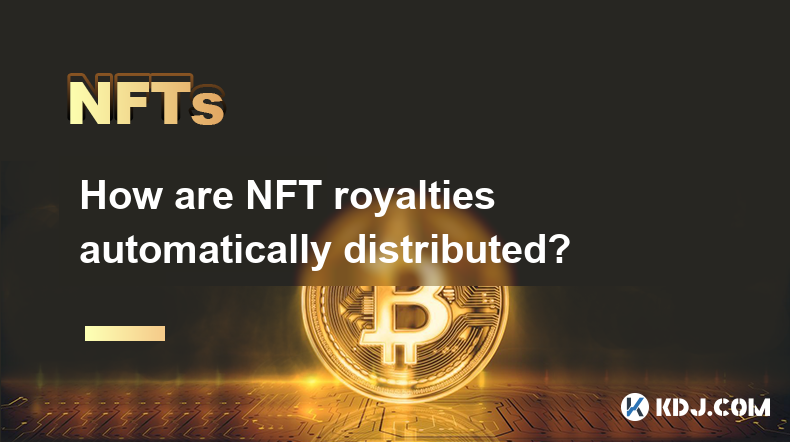
How are NFT royalties automatically distributed?
Apr 08,2025 at 08:14pm
NFTs, or Non-Fungible Tokens, have revolutionized the digital art and collectibles market by providing a way to prove ownership and authenticity of digital assets. One of the most intriguing features of NFTs is the ability to automatically distribute royalties to creators whenever their work is resold. This article will delve into the mechanisms behind ...
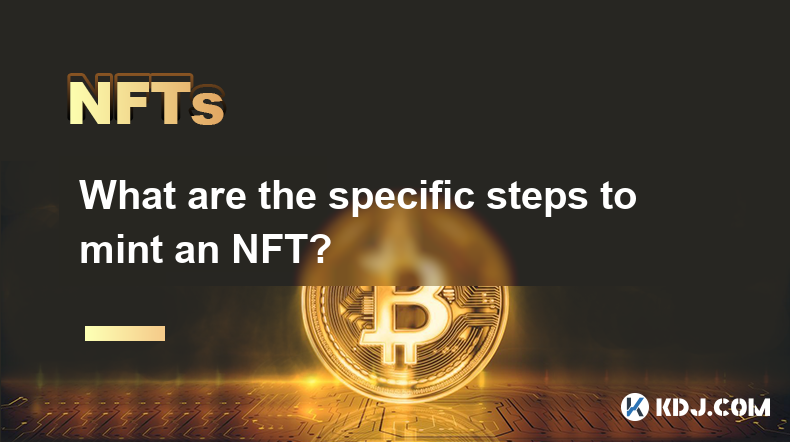
What are the specific steps to mint an NFT?
Apr 08,2025 at 05:22pm
Introduction to NFT MintingMinting an NFT, or Non-Fungible Token, involves creating a unique digital asset on a blockchain. This process allows artists, creators, and collectors to tokenize their work, ensuring its authenticity and ownership. Understanding the steps to mint an NFT is crucial for anyone looking to enter the world of digital collectibles....

How is dynamic NFT implemented?
Apr 11,2025 at 04:56am
Dynamic NFTs, or dNFTs, represent a fascinating evolution in the world of non-fungible tokens. Unlike static NFTs, which remain unchanged once minted, dynamic NFTs can evolve, change, or update based on certain conditions or external data. This article will delve into the implementation of dynamic NFTs, exploring the technologies and processes involved ...

Why do some NFT projects choose the ERC-1155 standard?
Apr 08,2025 at 11:49am
The world of Non-Fungible Tokens (NFTs) has seen a significant rise in popularity and innovation, leading to the development of various token standards. Among these, the ERC-1155 standard has emerged as a versatile and efficient choice for many NFT projects. This article delves into the reasons why some NFT projects opt for the ERC-1155 standard, explor...

Why is an NFT called a "non-fungible" token?
Apr 11,2025 at 06:15am
An NFT, or Non-Fungible Token, is a unique digital asset that represents ownership or proof of authenticity of a specific item or piece of content, typically stored on a blockchain. The term 'non-fungible' is crucial to understanding the nature and value of these tokens. In this article, we will delve into the reasons why an NFT is called a 'non-fungibl...

What is an NFT? How does it prove digital ownership?
Apr 09,2025 at 11:21pm
An NFT, or Non-Fungible Token, is a unique digital asset that represents ownership or proof of authenticity of a specific item or piece of content, typically stored on a blockchain. Unlike cryptocurrencies such as Bitcoin or Ethereum, which are fungible and can be exchanged on a one-to-one basis, NFTs are distinct and cannot be exchanged on a like-for-l...

How are NFT royalties automatically distributed?
Apr 08,2025 at 08:14pm
NFTs, or Non-Fungible Tokens, have revolutionized the digital art and collectibles market by providing a way to prove ownership and authenticity of digital assets. One of the most intriguing features of NFTs is the ability to automatically distribute royalties to creators whenever their work is resold. This article will delve into the mechanisms behind ...

What are the specific steps to mint an NFT?
Apr 08,2025 at 05:22pm
Introduction to NFT MintingMinting an NFT, or Non-Fungible Token, involves creating a unique digital asset on a blockchain. This process allows artists, creators, and collectors to tokenize their work, ensuring its authenticity and ownership. Understanding the steps to mint an NFT is crucial for anyone looking to enter the world of digital collectibles....
See all articles




















![🐢Super Mario World Koopa Troopa 100% 96⭐️ + Coin [Ao Vivo] 🐢Super Mario World Koopa Troopa 100% 96⭐️ + Coin [Ao Vivo]](/uploads/2025/04/10/cryptocurrencies-news/videos/super-mario-koopa-troopa-coin-ao-vivo/image-1.webp)


































































